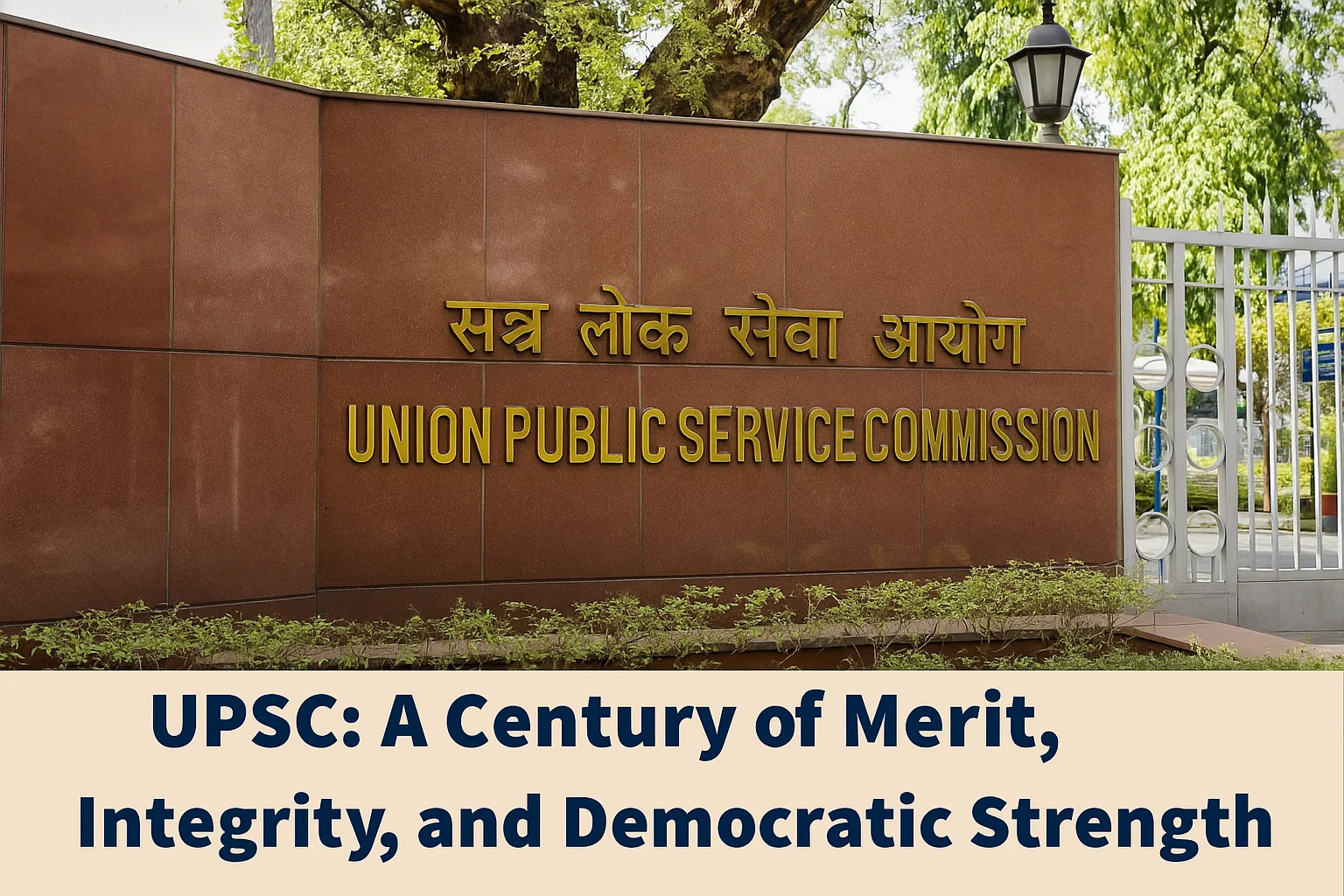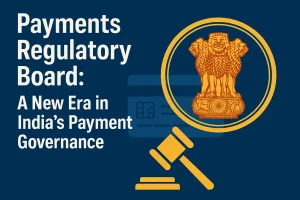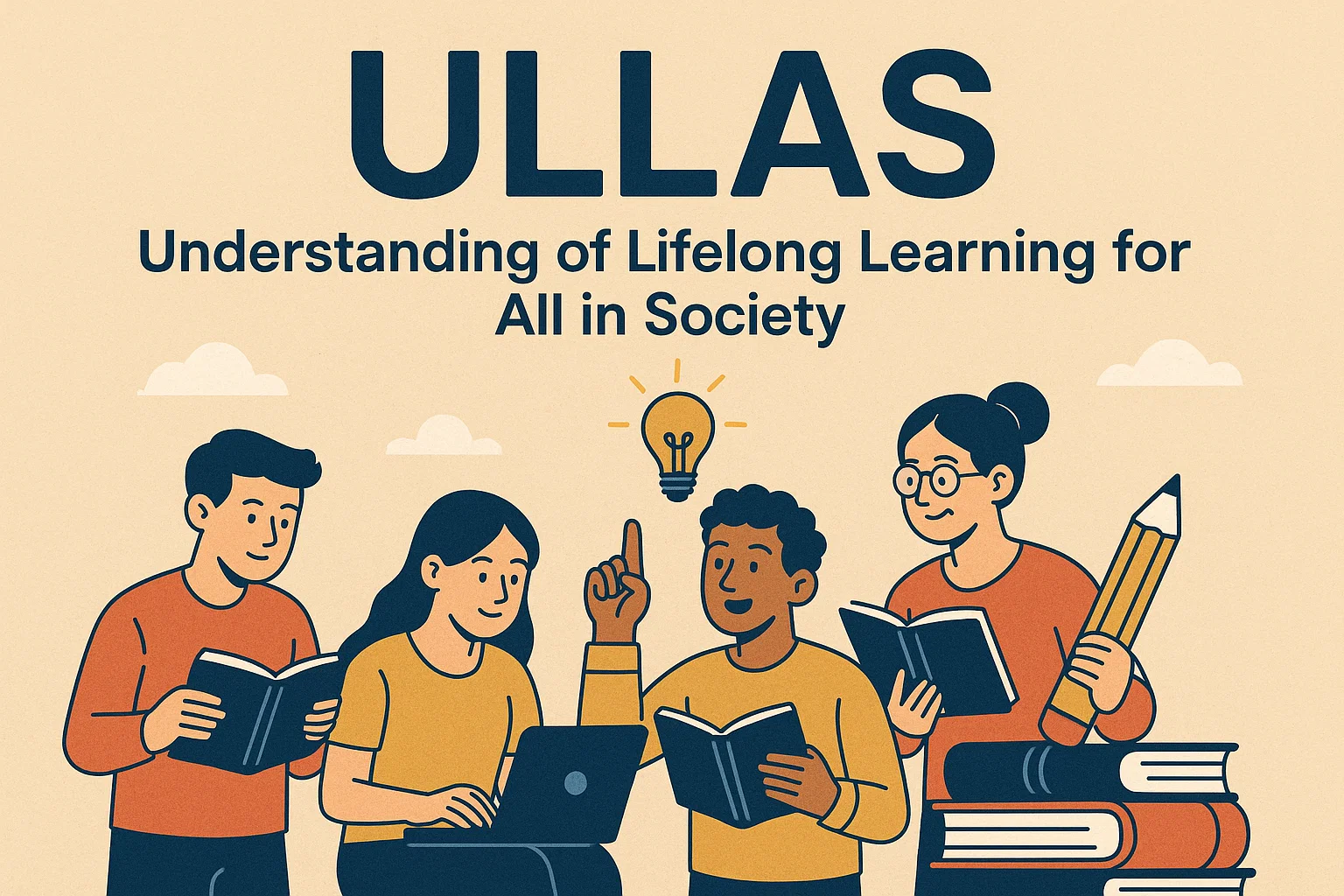UPSC: A Century of Merit, Integrity, and Democratic Strength
UPSC marks 100 years as India’s guardian of meritocracy. Learn its constitutional role, functions, reforms, and challenges in shaping democracy and governance.
Context
On 1 October 2025, the Union Public Service Commission (UPSC) began its centenary celebrations, marking 100 years of service since its establishment in 1926. Over the last century, the Commission has acted as the guardian of meritocracy in India by overseeing recruitment, promotion, and disciplinary matters in the Central Civil Services. Its journey reflects India’s enduring commitment to fairness, trust, and integrity in governance, making it one of the strongest institutional pillars of Indian democracy.
The Role of UPSC in Strengthening Indian Democracy
The UPSC was first set up in 1926 under colonial rule and was reconstituted as a constitutional body in 1950. It embodies meritocracy, transparency, and impartiality—values essential for sustaining democracy.
Constitutional Provisions
The UPSC is covered under Part XIV of the Constitution (Articles 315 to 323). Important provisions include:
-
Article 316 – Appointment of the Chairman and members.
-
Article 317 – Procedure for removal or suspension.
-
Article 320 – Functions of UPSC.
-
Articles 322–323 – Expenditure, reports, and oversight.
Role in Strengthening Democracy
-
Meritocracy and Equal Opportunity: UPSC ensures fair recruitment to prestigious services such as the IAS, IPS, and IFS, allowing candidates from diverse backgrounds to compete on equal terms.
-
Wider Access: By conducting examinations in 22 scheduled languages and offering flexibility in optional subjects, UPSC broadens participation for candidates beyond English-speaking or urban elites.
-
Impartiality and Integrity: Constitutional safeguards against political interference reinforce trust in the institution’s independence.
-
Institutional Stability: UPSC-recruited civil servants provide continuity and resilience in governance during political transitions, maintaining stability in a diverse democracy.
Appointments and Removal: Safeguarding Independence
The independence of the UPSC is reflected in its appointment and removal mechanisms.
Appointment
-
The President of India appoints the Chairman and members.
-
Tenure: six years or until the age of 65, whichever is earlier.
-
Experience Clause: At least half the members must have held office under the Government of India or a State for 10 years, ensuring practical expertise in administration.
Removal and Suspension
-
Removal is strictly limited to certain grounds to protect members from political arbitrariness.
-
Grounds include insolvency, engagement in external paid employment, or proven infirmity.
-
In case of misbehaviour, the President can remove a member only after the Supreme Court’s recommendation.
-
Article 317 governs UPSC members’ removal, while Article 311 separately protects civil servants from arbitrary dismissal.
This design ensures that UPSC members operate without fear of political pressure, upholding institutional integrity.
Functions and Powers of the UPSC
The UPSC’s mandate is wide-ranging, with Article 320 laying down its primary functions:
-
Recruitment: Conducts examinations for All-India Services and Central Services (through prelims, mains, and interviews).
-
Advisory Role: Advises governments on methods of recruitment, framing of service rules, promotions, transfers, and disciplinary matters.
-
Examination Logistics: Manages a massive nationwide exam system with strict transparency, covering syllabus, dates, evaluation, and interview procedures.
-
Reporting to Parliament: Submits Annual Reports to the President, which are then tabled in Parliament for discussion.
-
Regulation of Conditions: Under Article 318, UPSC can regulate conditions of service for its staff and members.
What reforms have been taken over the years?
|
Reform |
What changed/introduced |
How it benefits aspirants / strengthens UPSC |
| Pratibha Setu (formerly Public Disclosure Scheme) | A databank of non‑recommended candidates (those who cleared all exam stages but did not get final selection), open to verified employers (government / private). Over 10,000 candidates are part of it. | Provides a second chance for aspirants whose efforts were near ideal; reduces “all or nothing” pressure; helps talent not go to waste. |
|
New Application / Online Portal Structure |
UPSC revamped its application portal: introduced a four‑part structure, separated key stages, added Aadhaar‑based ID verification, and discontinued older modules like “One‑Time Registration” (OTR). | Simplifies process, reduces last‑moment rush, strengthens identity verification, and potentially reduces fraud. |
Remaining Challenges and Needed Reforms
Despite its success, UPSC faces criticism and suggestions for further reforms:
-
Fraudulent Documentation: Cases like the Khedkar controversy reveal loopholes in verification. Certificate claims (caste, disability) must be cross-checked and, within privacy norms, made part of the public record to deter fraud.
-
Attempts and Age Limits: Excessive attempts encourage prolonged preparation. Experts like Sanjeev Chopra have suggested reducing attempts and restricting exam validity to two years.
-
Coaching Culture: Heavy reliance on coaching has turned the exam into a memory-centric contest rather than one of analytical ability. Critics argue for more emphasis on critical thinking, problem-solving, and applied knowledge.
Addressing these issues can help UPSC maintain its role as the true guardian of meritocracy.
Conclusion
As UPSC celebrates 100 years, it stands as a symbol of India’s democratic resilience. By upholding merit, transparency, and impartiality, it has shaped generations of civil servants who form the backbone of the Indian state. Yet, in an era of climate change, digital disruption, and societal shifts, UPSC must continue to evolve.
Its centenary is not just an occasion for celebration but also for introspection—to ensure that future reforms preserve its integrity while making it more inclusive, innovative, and relevant for the challenges of the 21st century.
Subscribe to our Youtube Channel for more Valuable Content – TheStudyias
Download the App to Subscribe to our Courses – Thestudyias
The Source’s Authority and Ownership of the Article is Claimed By THE STUDY IAS BY MANIKANT SINGH





